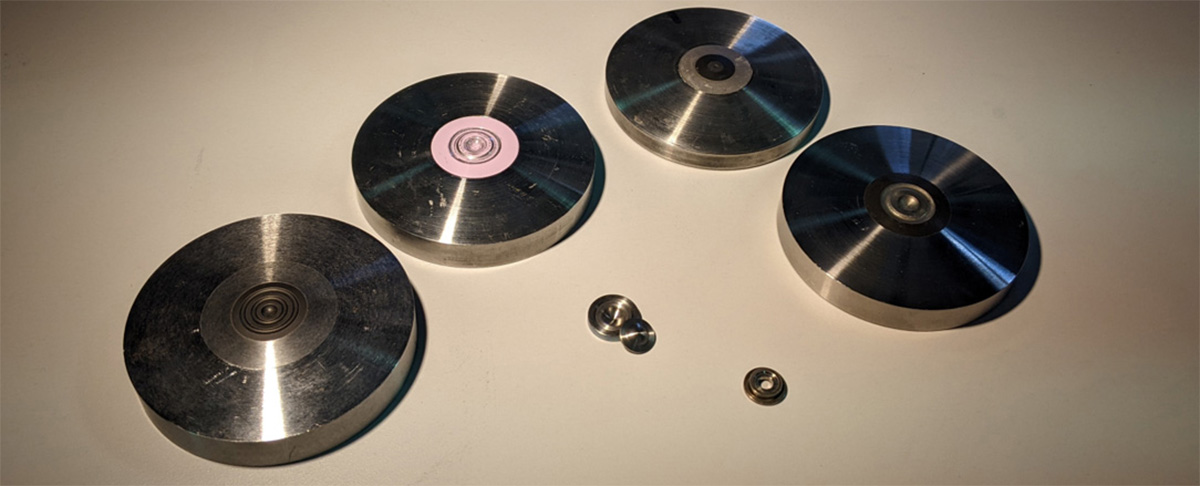Paris-Edinburgh cells

Different anvil and gasket geometries used with the Paris-Edinburgh presses from left to right: A polycrystalline diamond double-toroidal anvil, a zirconia toughened alumina single-toroidal anvil, a simple polycrystalline diamond ‘dimple’ anvil and a single-toroidal tungsten carbide anvil together with a typical encapsulated TiZr gasket for single-toroids and a standard TiZr gasket for double-toroids (front).
The ORNL Paris-Edinburgh cell program commenced at the SNS’s High Pressure Diffractometer, SNAP, where still the majority of experiments with this type of cell are conducted. See here for capabilities on the SNAP beamline.
Over the last few years, the use of the cells has been extended to other beamlines and is now available in the user program of HFIR’s WAND2: Donnelly et al. HPR 42, 213 (2022).
Additionally, use at various SNS spectrometers has been explored. More details on this to follow as capabilities become available in the user groups.
For experiments on SNAP , please directly contact the SNAP Beamline Team. For further possible experiments, future opportunities and general enquiries, please contact Jamie Molaison.
| Cell type | Max load |
|---|---|
| VX1, steel | 40 tons |
| VX3, steel | 200 tons |
| VX5, steel | 150 tons |
| Geometry | Material | Max pressure* |
|---|---|---|
| Single-toroidal | Cubic boron nitride | 7-9 GPa |
| Single-toroidal | Tungsten carbide | 6-7 GPa |
| Single-toroidal | Zirconia toughened alumina | 7-9 GPa |
| Double-toroidal | Polycrystalline diamond | 16-20 GPa |
*NOTE: Maximum possible pressure varies depending on compressibility of sample, pressure medium, exact loading and details of a given experiment.


